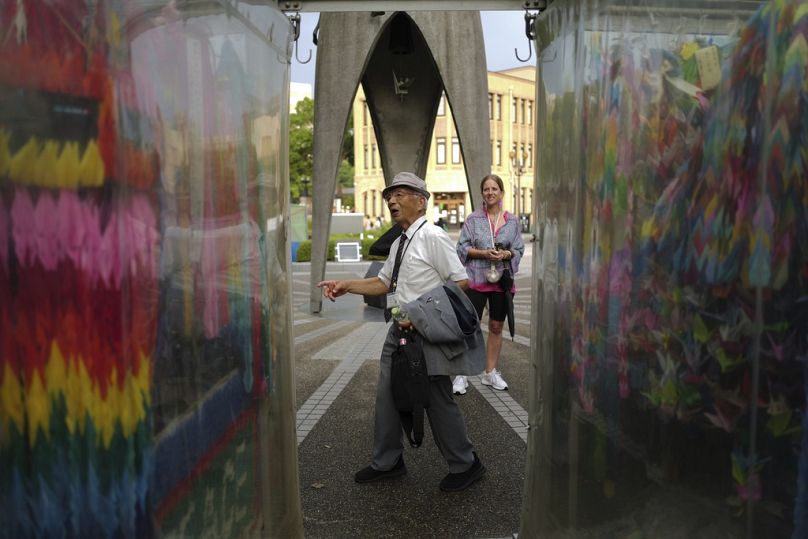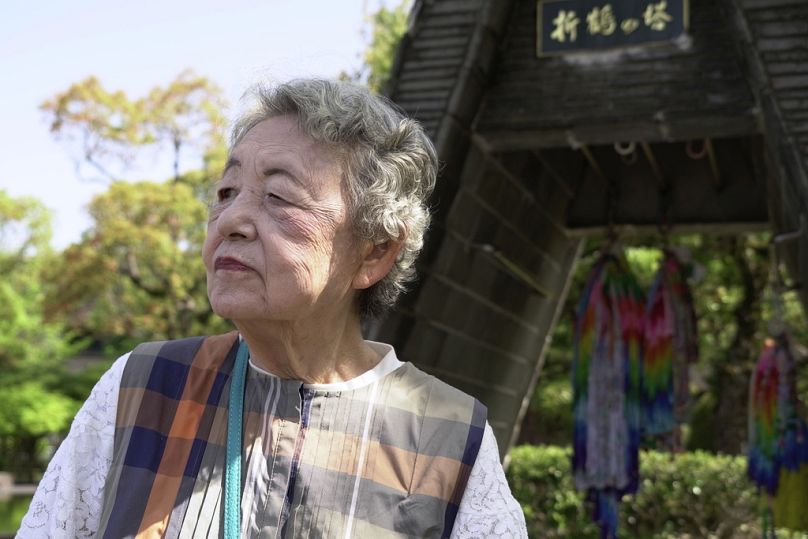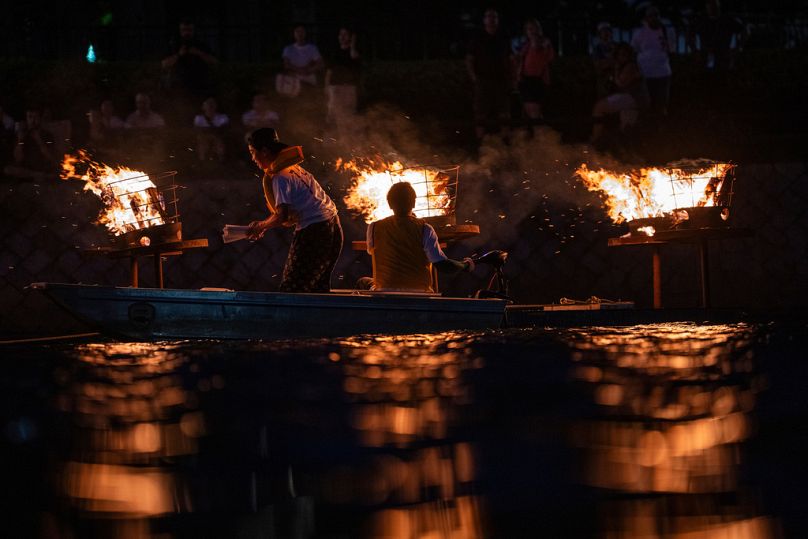 ADVERTISEMENT
ADVERTISEMENT Where there was once fire and ruin, Kunihiko Iida now walks through green lawns and memorials. Hiroshima’s Peace Memorial Park – built on the site where the atomic bomb hit on 6 August 1945 – is today a place of quiet reflection. It is also where 83-year-old Iida spends his time as a volunteer guide, sharing a story it took him 60 years to speak aloud.
Iida was just three years old when the US dropped a uranium bomb on Hiroshima on 6 August 1945. He was 900 metres from the hypocentre, at his mother’s childhood home.
He remembers being trapped under debris, bleeding from shards of broken glass. He tried to scream – “Mummy, help!” – but no sound came. His grandfather eventually rescued him.
Within a month, his 25-year-old mother and four-year-old sister had died. Iida suffered radiation symptoms into his school years, though he gradually regained his health.
He avoided the site of the bombing for decades. Then, in his late 50s, he returned – reluctantly – at the request of his ageing aunt. That visit to the peace park marked the beginning of a slow, emotional process of opening up.
Now, Iida guides foreign visitors through the memorial, worried that global understanding of the bombings is fading. In June, he travelled to Paris, London and Warsaw as part of a government-backed peace programme. He feared how his message might be received in nuclear-armed countries, but said he was met with “applause and handshakes.” Key to his approach is encouraging students to envision the long-term consequences of nuclear war: not just the immediate destruction, but the radioactive contamination that would endure.
“The only path to peace is nuclear weapons’ abolishment. There is no other way,” Iida said.
In Nagasaki, 86-year-old Fumiko Doi’s life was spared by chance. On 9 August 1945, a delay kept her train from arriving at Urakami Station at the moment the second atomic bomb detonated above a nearby cathedral.
Through the window, Doi, then six, saw the flash. She bent over and covered her eyes as the glass shattered around her. Other passengers shielded her. Outside, she saw people whose faces were “charcoal black” and whose clothes were torn to pieces.
Doi kept her hibakusha (a Japanese term referring to survivors of the atomic bombings of Hiroshima and Nagasaki) status hidden for years. She feared discrimination. Her father, a local official, had been ordered to collect bodies after the bombing and soon developed radiation symptoms. He later became a teacher and wrote poems about what he had seen – poems that brought his daughter to tears.
She married another survivor and worried that her children might suffer long-term effects. Her mother and two brothers died of cancer, and her sisters still struggle with health problems. She only began to speak publicly after the 2011 Fukushima nuclear disaster, which revived her fears about radiation.
“Some people have forgotten about the atomic bombings… That’s sad,” she said, underscoring that some countries have nuclear weapons even more powerful than those used on Hiroshima .
“If one hits Japan, we will be destroyed. If more are used around the world, that’s the end of the Earth,” she said. “That’s why I grab every chance to speak out.”
Roughly 100,000 survivors of the atomic bombings are still alive.
Some, like Iida and Doi, are only now finding the strength to speak. Many others still stay silent, shaped by trauma or fear of stigma that lingers even eight decades later.
After the 2023 G7 summit in Hiroshima and the awarding of the Nobel Peace Prize to the survivor-led group Nihon Hidankyo, the city’s museums saw a surge in visitors, many of them from abroad. At the Hiroshima Peace Memorial Museum, about a third of visitors are now international.
One of them, American visitor Samantha Anne, said she brought her children to understand the consequences of that day. “It’s a reminder of how much devastation one decision can make,” she said.
Volunteer guide Katsumi Takahashi, 74, welcomes the growing interest from abroad but worries that Japan’s younger generations are forgetting their own past.
After one of his tours, Iida stopped at the monument to the children killed in the bombing. Nearby, millions of paper cranes – symbols of peace – hung on strings, sent from all over the world.
Among those who listened to his story that day was French visitor Melanie Gringoire. “It’s like sharing a little piece of history,” she said.










